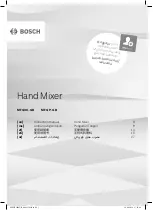
17
AUXILIARY SENDS
- Route the channel signal to one or
more of 10 auxiliary send busses. These are independent
from the main outputs and may be used for effects sends
and monitor mixes. The sends are grouped 1-4, 5-8, and 9-
10. Each group may be selected pre or post channel fader.
A further 6dB of boost above 0dB normal channel level is
available on the send control.
Use
post-fade
for effects sends such as reverb. The amount
of signal sent to the effects unit follows the fader level and
mute switch. The processed ("wet") signal returned to the
mix through the return channel is therefore in proportion to
the direct ("dry") signal from the fader to the mix.
Use
pre-fade
for monitor sends such as to on-stage monitor,
backstage, orchestra pit, and musicians cue speakers. The
amount of signal in the monitor mix is independent of the
fader level. Pre-fade sends are post-EQ, post-mute as
standard. (may be configured pre-EQ or pre-mute by setting
internal links).
DIRECT OUT
- The 0dBu post-fade channel signal is
available at the DIR OUT jack socket. For pre/post selection
and independent level control select the underpanel
#
DIR OUT
mode switch. The 9-10 pre/post switch and aux 10
send control now affect the direct out signal. Select POST
for an effects send dedicated to that channel (local effect)
without tying up a complete aux buss. Select PRE for a
multitrack recording send with independent level control.
MUTE
- When illuminated the channel signal is turned off
(muted). This affects both pre and post fade signals unless
the pre-fade aux has been internally configured pre-mute.
The silent action mute element can be controlled by the
switch, mute groups, mute patches or via MIDI. The green
SAFE/PREVIEW LED indicates if the channel has been
made 'safe' so that it is not affected by the mute groups,
patches or MIDI. It is also used when previewing or editing
the groups and patches.
ROUTING and PAN
- The PAN control positions the
channel signal in the stereo mix. The post-pan signal may
be routed directly to the L-R mix or to the groups in odd/even
pairs. The groups may be used to feed additional outputs or
recording tracks, or for
subgrouping
combinations of
channel signals to the mix so that the overall level of the
group can be controlled without affecting the balance between
the signals, for example the drum kit mics. The pre-pan
signal may be routed to the MONO output independent of the
stereo positioning.
METER and PFL
- The peak reading meter displays the
channel signal pre-fader. Use this to monitor signal presence
and level. The signal should average around '0' with the
loudest peaking at '6'. If the red PEAK light flashes the signal
level is too high (5dB below clipping) and should be reduced
using the GAIN control to prevent possible overload distortion.
Press PFL to listen to the pre-fade signal on headphones or
engineers monitor without affecting the main outputs.
Содержание GL4000
Страница 1: ...ALLEN HEATH GL4000 Dual Function Audio Mixing Console USER GUIDE PUBLICATION AP2642...
Страница 10: ...9 SYSTEM DIAGRAM...
Страница 45: ...44 FRONT OF HOUSE WITH RECORDING...
Страница 54: ...53...















































